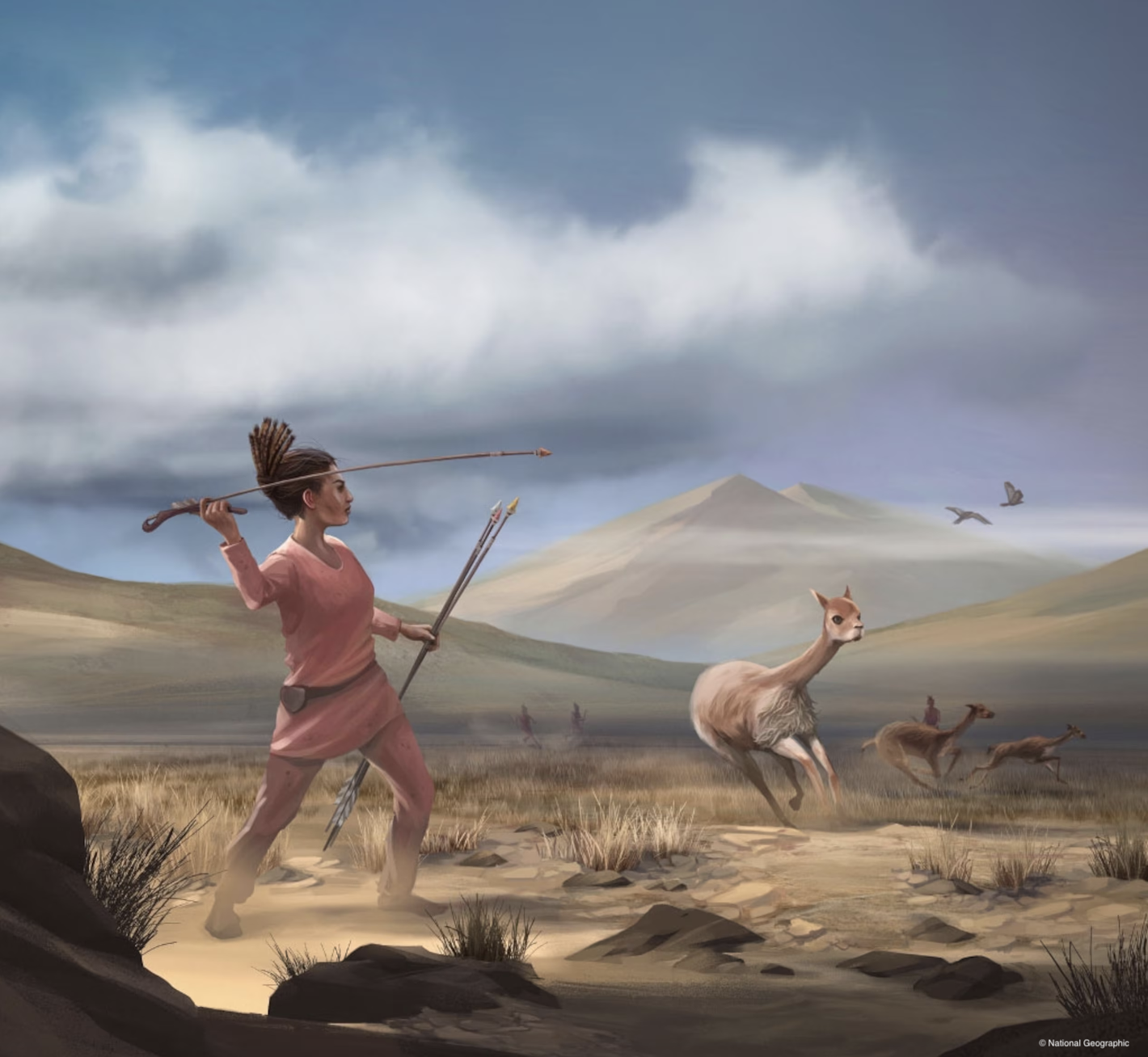Since the late 1960s, the evolutionary theory of “Man the Hunter” has dominated science’s perspective of prehistoric hunter-gatherer societies. Published as a collection of scholarly papers assembled by Richard B. Lee and Irven DeVore in 1968, the theory claimed that hunting was a primary driver of human evolution. As interesting as that is, the part of “Man the Hunter” which really gained popularity was their claim that hunter-gatherer societies were divided by biological sex. That is, men hunted and women gathered. Lee and DeVore gained great support and influence in the scientific community of evolutionary anthropology due to their use of evidence from various ethnographic, archaeological, and paleoanthropological studies. The theory impacted almost all of the following studies surrounding the anthropology of prehistoric humans; the idea of ‘man the hunter, woman the gatherer’ has become ingrained in societal understanding of these prehistoric societies. However, this theory is wrong. A recent study published in PLOS ONE by biological anthropologist Cara Wall-Scheffler and four of her undergraduate students analyzed ethnographic data from the last hundred years, hitting the science world as a sensation. The study provided evidence that women in a multitude of cultures across the globe hunted just as much as men, with just as much variation in the type of game. Data was collected from literature from sixty-eight different foraging societies across the world, and of these 79% had documentation on women hunting, and 41 of those had information on whether it was intentional or opportunistic. 87% of the foraging societies described intentional hunting compared to just 12% which described it as opportunistic. Additionally, women actively hunted 100% of the time in societies where hunting was considered the prime source of sustenance. Previous theories claimed that when women did hunt, assuming that it was in fact intentional and not opportunistic as many studies had hypothesized before, they mostly hunted small game. Data from the PLOS ONE study found that among the 45 groups with information on the size of game hunted, 21 groups hunted small game, 7 hunted medium game, 15 hunted large game, and 2 hunted game of all sizes. When it comes to women and hunting in prehistoric societies, this study practically nullified the information presented in the “Man the Hunter” theory. Additionally, the new analysis has contributed to the growing necessity of reevaluating much of the information on prehistoric hunter-gatherer societies; for decades researchers believed (to varying degrees) that hunter-gatherer societies were divided by biological sex, with males hunting and females gathering. This deeply ingrained concept thus creates a much higher likelihood for researcher bias being present, which could lead to the automatic assumption that when a burial is found with the prehistoric hunting tools the individual is male. Researcher bias also may heighten the probability that when such a burial is found to contain the remains of a biological female there will be significantly more questioning as to whether the tools actually belonged to this individual. It’s unfair to say that all of such questioning is without precedent, as sometimes burials contain remains whose biological sex can’t be identified fully, or the grave contains disturbed contents. In others the objects may have been murder weapons interred with the victims, or could have been placed with an individual due to religious and/or symbolic beliefs. However, if this questioning is unnecessarily increased, there is a high likelihood that this isn’t due to the normal concerns, but instead influenced by the individual’s gender and the perception of the researchers. One such example is the excavation of a 9,000 year old grave in the Andes Mountains of Peru, which belonged to an adult buried with an extensive kit of stone tools ancient hunters used for big game. Originally, this individual was believed to be a biological male, but further analysis demonstrated the remains actually belonged to a biological female. In order to determine whether such a burial was an anomaly, a subsequent study reviewed previously discovered remains of a similar age across the Americas, revealing that biological females may have made up between 30 and 50 percent of big game hunters. The division between humans based on biological sex is a characteristic of society that no one alive today has known life without. Our investigations of prehistoric hunter-gatherer societies seem to have demonstrated a similar dynamic. Yet, is this information biased due to our preconceptions of how society should function? Is our information muddled by researcher bias? Recent investigations point to yes. Modern society may separate the genders, but prehistoric ones, the root of humankind, recognized what people today fail to do: we are all just people.
Bibliography:
Man the Hunter: Women’s contribution to the hunt across ethnographic contexts.” PLOS ONE 18(6): e0287101. https://doi.org/10.1371/journal.pone.0287101 Accessed Oct. 28 2023
Ocobock C. Lacy S. “The Theory That Men Evolved to Hunt and Women Evolved to Gather Is Wrong.” Scientific American, Set to Print Nov. 1 2023, https://www.scientificamerican.com/article/the-theory-that-men-evolved-to-hunt-and-women-evolved-to-gather-is-wrong1/ Accessed Oct. 28 2023
Wei-Haas, Maya. “Prehistoric female hunter discovery upends gender role assumptions.” National Geographic, Nov. 4 2020, https://www.nationalgeographic.com/premium/article/prehistoric-female-hunter-discovery-upends-gender-role-assumptions Accessed Oct. 28 2023
Randall Haas et al., “Female hunters of the early Americas.” Science Advances, https://www.science.org/doi/10.1126/sciadv.abd0310, Accessed Oct. 28 2023
Miller, Katrina. “Move Over, Men: Women Were Hunters, Too.” New York Times, Nov. 4 2020, https://www.nytimes.com/2023/08/01/science/anthropology-women-hunting.html, Accessed Oct. 28 2023
Gershon, Livia. “This Prehistoric Peruvian Woman Was a Big-Game Hunter.” Smithsonian Magazine, Nov. 5 2020, https://www.smithsonianmag.com/smart-news/9000-year-old-big-game-hunter-peru-prompts-questions-about-hunter-gatherer-gender-roles-180976218/, Accessed Oct. 28 2023
Osborne, Margaret. “Early Women Were Hunters, Not Just Gatherers, Study Suggests.” Smithsonian Magazine, Jun. 30, 2023, https://www.smithsonianmag.com/smart-news/early-women-were-hunters-not-just-gatherers-study-suggests-180982459/, Accessed Oct. 28 2023
Beau, Elle. ““Man The Hunter” Wasn’t The Catalyst For Human Evolution.” Medium, Feb. 5 2023, https://medium.com/inside-of-elle-beau/man-the-hunter-wasnt-the-catalyst-for-human-evolution-eb2e469eea98, Accessed Oct. 28 2023

